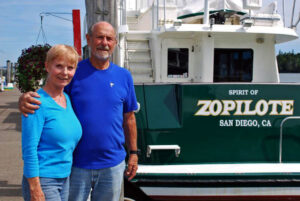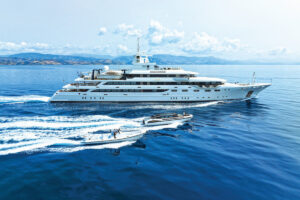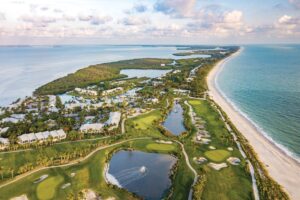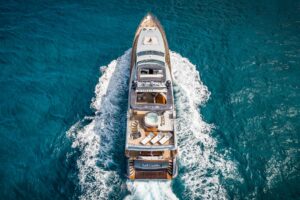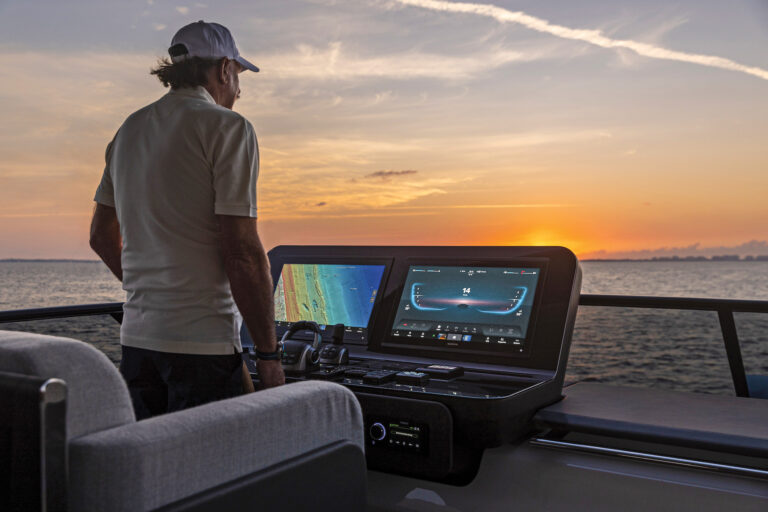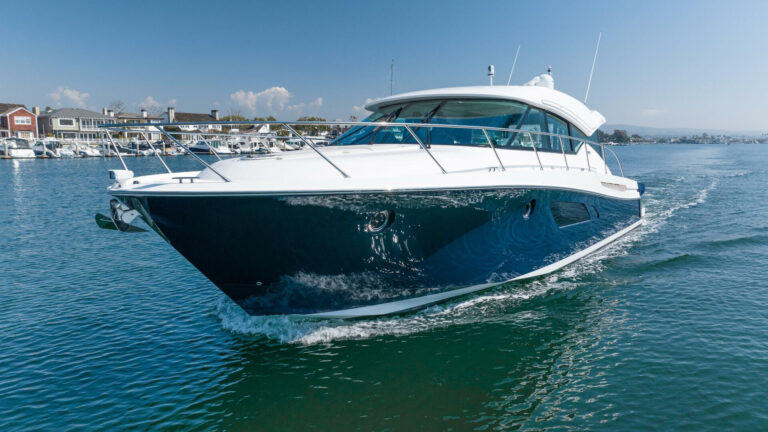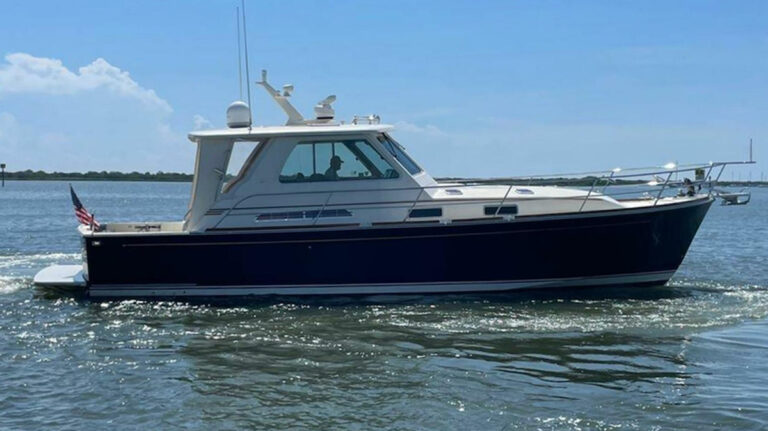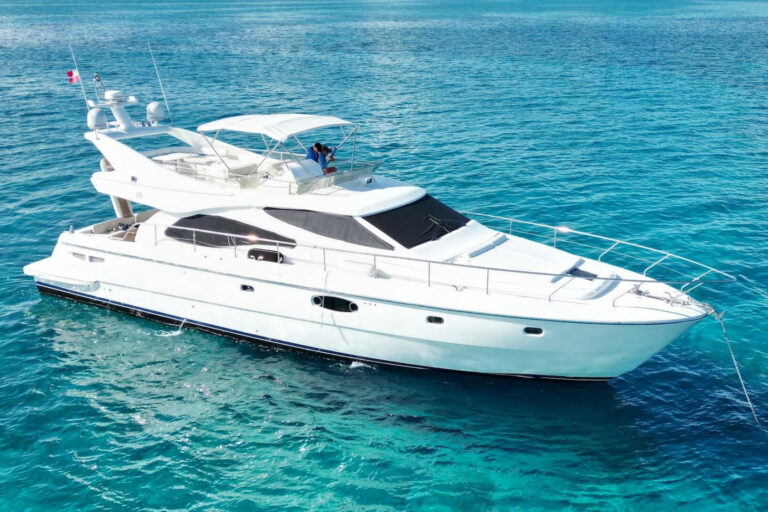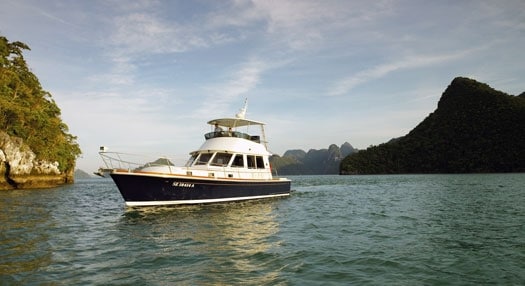
yachting/images/magazine/2007/052007/fea_grandbanks10_525x286.jpg
It was just before midnight, and we were somewhere off the coast of Langkawi, on the border of Malaysia and Thailand, speeding toward an island anchorage at 20 knots on a gorgeous, blue-hulled Grand Banks Eastbay 47. The water was flat, and on the bridge the tropic air was warm and soothing. An umbrella of stars covered us, there were millions and millions of them, more than I’ve ever seen before, and they seemed so close that we could almost reach out and touch them. It was one of those magical moments when the water and the sky blended seamlessly into one universe; we couldn’t tell where one ended and the other began. We sped on through the night, as if suspended in time and space.
Our Langkawi adventure was really a cruise within a cruise, a chance to do some boating where the people in that part of the world go when they have the opportunity. The real point of this trip, flying halfway around the world from home, was to see the brand-new, hull number one of the Grand Banks 47 Heritage Classic in its home waters in Singapore. But Singapore is primarily a commercial harbor. For recreational boating, people either head up the east side of the Malay peninsula or, as we did, go 380 miles northwest to Langkawi, an archipelago of 99 islands (at high tide) with some of the most beautiful beaches and protected coves and cruising grounds you’ll ever see.
But to start at the beginning. We (Gary John Norman, the photographer; David Hensel, Grand Banks marketing director from Seattle; and I) first saw the 47 Heritage Classic in the morning mist, tied to the dock at One 15 Marina (one degree, 15 minutes north of the equator) in Sentosa, the resort island that’s part of Singapore. (Full disclosure: I am quite fond of Grand Banks, particularly the Heritage/Classic line, because I used to have one, a 36. I not only cruised the East Coast, from the Florida Keys to Nantucket on it, but I also lived aboard year-round in Connecticut.)
James Purves, Grand Banks’ Singapore dealer, fired up the new 47 and we were under way, the twin Cat 455 hp C7 diesels powering us at an easy 18 knots into the main harbor. Three things about the new 47 caught my eye right away. First is a new access door leading from the back of the saloon to the aft deck on the port side, so that you don’t have to walk out along the sidedecks to get to the back of the boat. Second was the galley-down arrangement, with a very large galley on the port side just two steps down from the saloon, so that it is still part of the main conversation and living area of the boat. Third is a built-in recess on the starboard side of the bridge for the davit. The davit simply swings out when you want it; it’s hidden and out of the way the rest of the time, not affecting the classic lines of the boat. Up top, the bridge is large and uncluttered. A Stidd helm chair is centered, with another off to starboard. I settled into a comfortable cushioned seat on the port side as James took us out. (We’ll have a full test of the 47 Heritage Classic in an upcoming issue.)
In the course of two days, we cruised around Singapore, hoping for a break in the weather (it was the rainy season), particularly for pictures. The first day we put in at Raffles Marina (the famous Raffles Hotel is half an hour away downtown) and ate lunch on the patio, while other guests wandered down to look at the new Grand Banks. We cruised past dozens and dozens of freighters, and took a good look at the kelongs, or small houses, shacks really, built on stakes in the middle of harbor with fish traps in the middle.
As we dodged rain squalls and white caps, we appreciated the lower helm station and the 47’s excellent visibility and boat handling. I spun it in Marina Bay, in front of Singapore’s skyscrapers, and also over by the iconic Merlion (half mermaid, half lion) fountain there. I realized (no surprise) that this is a seaman’s boat, strong, sturdy, with handholds everywhere you need them and huge cleats, doubled in the bow and stern. It also (again, no surprise) is solid; there are no rattles and the doors close with a thunk. And the teak and joinerwork is simply beautiful.
To head for a more traditional cruising ground, we left the 47 Heritage CL in Sentosa, and flew up to Langkawi, changing planes in Kuala Lumpur. James, ever resourceful, met us at a waterfront restaurant at Telaga Harbour, a major resort area, where we had a late dinner overlooking the docks before climbing on the Eastbay 47. James also runs Peninsula Boating, which manages boats for owners; he was delivering the Eastbay later in the week up to Phuket, Thailand. So there we were, just before midnight, running through one of the most beautiful night skies I’ve ever seen at 20 knots, for about an hour. Just as we turned left to head for our anchorage, a protected cove called “the fjord,” a shooting star fell across our bow; I took it for good luck.
In any event, I had no trouble falling asleep in the master stateroom in the bow, but I thought I had just shut my eyes when the rattling of the anchor chain about a foot from my head jolted me awake. Then the engines started. We had swung 180 degrees, the anchor alarm went off, and we were repositioning the boat. It was 4:45 in the morning. At that point, we all simply stayed up.
Once the sun came up, I saw something about five feet long in front of the boat. I thought it was a log, except that it was moving slowly against the current. James said it was a big lizard, like an iguana. I decided to go swimming later. We started the 705 hp Cats and went exploring. Langkawi is the largest island in the archipelago, and it’s the only one that’s developed. It has some of the most ancient rainforests in the world, so the hills are green and lush, but it also has little inlets and coves and one white pristine beach after another. There are some resorts (a Four Seasons, a Sheraton) but there aren’t a lot of people. Every once in a while we’d pass a local fisherman on his long, narrow long-tail boat, where the driveshaft sticks out behind the boat like a very simple sterndrive. As we cruised along, tangiri, the local flying fish, jumped next to the boat, keeping us company. In the tropics, we chilled.
For lunch, we turned in to the Hole in the Wall, a little inlet halfway ’round the island and dropped the hook. We climbed into the RIB to head up a small creek to a restaurant that James recommended. But the tide was going out, the creek narrowed down to about 10 feet wide, the sun beat down, the monkeys chattered and the snakes slithered; I felt as if we were in the middle of Apocalypse Now. When we did get up to the restaurant, high and dry on stilts, James climbed out of the RIB to test the mud and sank up to his knees. We returned to a wonderful floating restaurant at Hole in the Wall and had fresh fish (they serve the entire fish) and prawns, rice, and lots of lime juice.
When we couldn’t eat any more, we continued our cruise around the island, anchoring in mid-afternoon about 50 yards off a long half-moon beach at Detai so we could go swimming. After I dove in I was surprised at how salty the water was; we also were getting stung by something we couldn’t see, so we retreated to the Eastbay for some serious relaxing.
Late in the day I drove the boat back to the marina, loafing along at 26 knots at 1900 rpm. The water was flat, the sky blue, the tropic air warm on our cheeks; we had not a care in the world. That night we had dinner at Bon Ton resort, a small compound of antique Thai thatched houses on stilts. The restaurant is on a patio overlooking rice paddies, water buffalo moved slowly in the background. We ate the specialty, tamarind fish and prawns on a pandan leaf-we could have been back in the 19th century. As we headed back to the airport, I thought that this had just been a fast broadstroke introduction to the exotic worlds of Singapore and Langkawi. Now I need to return to fill in the whole picture-preferably in a new Grand Banks.
Contact: Grand Banks Yachts; www.grandbanks.com; www.peninsulaboating.com

